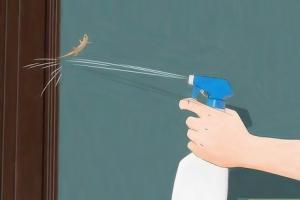Effective Strategies to Chase Lizards Out of Your House: A Comprehensive Guide

-
Quick Links:
- Introduction
- Understanding Lizards
- Common Types of Lizards in Homes
- Why Lizards Enter Homes
- Preventing Lizards from Entering Your Home
- Natural Repellents for Lizards
- Physical Removal Methods
- When to Call Professionals
- Case Studies
- Expert Insights
- Conclusion
- FAQs
Introduction
Finding lizards in your home can be a surprising and unsettling experience. While they are generally harmless and can even help control pests, many people prefer to keep their homes lizard-free. This guide will provide you with effective strategies and insights on how to chase lizards out of your house, making it a more comfortable living space.
Understanding Lizards
Lizards are reptiles belonging to the suborder Lacertilia. They can vary significantly in size, color, and habitat preferences. Understanding their behavior and habits is crucial for effective removal and prevention.
- Diet: Lizards primarily feed on insects and other small invertebrates, making them beneficial pest controllers.
- Behavior: Lizards are cold-blooded and often seek warm environments, especially during colder months.
Common Types of Lizards in Homes
Different regions host various species of lizards. Here are some common types that you might encounter in your home:
- Geckos: Known for their chirping sounds and ability to climb walls.
- Anoles: Often found in gardens, they can change color for camouflage.
- Skinks: Smooth, shiny scales and typically prefer moist environments.
Why Lizards Enter Homes
Understanding why lizards invade your home can help you prevent future occurrences. Common reasons include:
- Food Sources: Availability of insects and spiders.
- Warmth: Seeking refuge from cold weather.
- Shelter: Cracks and crevices provide ideal hiding spots.
Preventing Lizards from Entering Your Home
Prevention is the first line of defense. Here are some effective strategies:
- Seal cracks and openings around windows, doors, and foundations.
- Keep your garden tidy to reduce insect populations.
- Limit access to warm, dark places inside your home.
Natural Repellents for Lizards
If you prefer eco-friendly solutions, consider these natural repellents:
- Caffeine: A mixture of coffee and water can deter lizards.
- Eggshells: Placing crushed eggshells around your home may signal danger.
- Garlic and Onion: The strong odor may repel lizards.
Physical Removal Methods
If lizards have already made themselves at home, here are some safe and humane removal methods:
- Use a jar or container to trap the lizard gently.
- Release the lizard outside away from your home.
- Consider using a broom to gently guide the lizard towards an exit.
When to Call Professionals
If you find yourself overwhelmed, it might be time to call pest control experts. They can provide targeted removal and prevention strategies tailored to your situation.
Case Studies
Here are a few real-life examples where homeowners successfully managed lizard invasions:
Case Study 1: The Geckos in Miami
A Miami resident discovered a family of geckos nesting in her kitchen. By sealing entry points and using natural repellents, she successfully deterred them without harming the creatures.
Case Study 2: Anoles in the Garden
A homeowner in Florida utilized physical removal techniques, guiding anole lizards back into the garden, thereby keeping her home lizard-free while supporting local wildlife.
Expert Insights
We consulted with pest control experts who provided insights into the best practices for lizard management:
"Understanding the behavior of lizards can significantly help in preventing their entry. It's essential to create an environment that is less inviting for them." - Dr. Jane Smith, Entomologist
Conclusion
Chasing lizards out of your home doesn't have to be a daunting task. With a combination of prevention, natural repellents, and humane removal methods, you can effectively manage lizard populations in your living space.
FAQs
1. Are lizards harmful to my home?
No, most lizards are harmless and can actually help control pest populations.
2. How can I prevent lizards from entering my home?
Seal cracks, keep gardens tidy, and reduce insect populations.
3. What natural repellents work best?
Caffeine, garlic, and eggshells are effective natural repellents.
4. Is it safe to remove lizards myself?
Yes, using gentle methods to trap and release them is safe and humane.
5. When should I call pest control?
If you have a significant infestation or feel overwhelmed, consider calling professionals.
6. Can lizards harm my pets?
Most lizards pose no threat to pets, but always supervise interactions.
7. What should I do if I find a lizard in my house?
Gently guide it outside using a container or broom.
8. Do lizards bite?
While lizards can bite, they typically do so only when threatened.
9. Can I use insecticide to remove lizards?
It's not recommended, as insecticides can harm lizards and other wildlife.
10. What attracts lizards to my home?
Food sources like insects, warmth, and shelter can attract them.